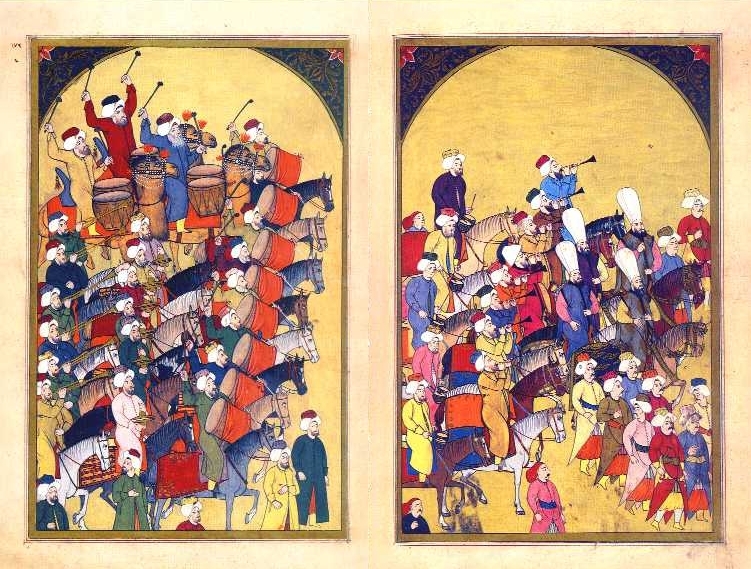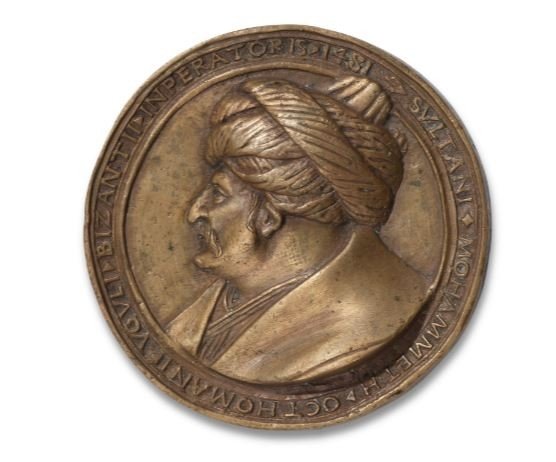
Netflix's popular series Vikings: Valhalla surprised viewers with its final season episodes. The scene where soldiers of the Eastern Roman Empire (Byzantine) are welcomed into Constantinople by a military band playing a march belonging to the Ottoman Empire's military band, the Mehteran, specifically the "Hucum Marsi" (Attack March), sparked numerous historical and cultural debates.
Following the release of "Vikings: Valhalla"s third season, the use of a Mehter march during the Eastern Roman Empire period has been criticized for historical accuracy. The Mehter march is generally known as the military music of the Ottoman Empire, and its use during the Eastern Roman Empire period is not documented in historical sources.
Additionally, the song "Yine de Sahlaniyor" played in the palace of the Eastern Roman Empire in the series reminded viewers of the 1980 Turkish military coup period, adding another layer to the controversy. This song by Hasan Mutlucan was frequently used for propaganda by the junta regime of that time and left a lasting impression on the public.
The producers of Vikings: Valhalla announced that there would be no future seasons of the series, but the current season continues to attract significant interest from its audience.
In conclusion, Vikings: Valhalla's attempt to blend historical facts with fictional elements has sparked wide-ranging discussion and curiosity among viewers. Criticisms and comments regarding the historical accuracy of the series continue to be actively discussed on social media and media platforms.

The people of the Eastern Roman Empire, or Byzantium, referred to themselves as "Romans," and the lands they lived in, today's Anatolia, were referred to as "Rome" in those times. The word "Rome" was translated into Eastern languages as "Rum." Muslims living in the "Rome" of that time were referred to as "Rumi," and the term "Rumi" in Mevlana Jalaluddin Rumi's name refers to this. "Rumelia" means "land of the Romans," and one of the titles of Sultan Mehmed II, who conquered Istanbul, was "Sultan of Rum."

The Ottoman Empire gained its imperial identity after Sultan Mehmed II's conquest of Istanbul, and as Professor Ilber Ortayli mentioned, "Third Rome," or the Ottoman Empire, replaced the "Second Rome," Byzantium.
All three empires (Roman, Eastern Roman, and Ottoman Empires) had cultural exchanges with each other. While the marches played in the series "Vikings: Valhalla" belong to the Ottomans, military music was also performed in the Roman Empire. Historical sources indicate that infantry in the ancient Roman army played horns and cavalry played trumpets. It is known that Napoleon's army also had a band. The Italian musician Giuseppe Donizetti, who was appointed head of the "Mizika-yi Humayun" band-music school established to replace the disbanded Mehter unit, served as a bandmaster in Napoleon's army.

In the battlefields of the ancient Roman Empire, music not only boosted morale but also played a strategic role. Various wind instruments used in the Roman army became indispensable tools for giving commands, coordinating movements, and organizing soldiers during battle.
The tuba, a long bronze instrument, was commonly used in the Roman army to inform soldiers and give commands.
The cornua, which resembles a large "G" and is about 9.8 feet (approximately 3 meters) long and can be disassembled, was used to gather soldiers under a specific signal.

The lituus, a J-shaped trumpet with a straight but curved end and a detachable mouthpiece, was used to give commands such as charge or retreat.
The buccina, another wind instrument similar to the cornua but typically played by lower-ranking soldiers, was used to announce nightly watch changes and other routine activities.
In ancient Roman culture, music held a significant place not only in the military field but also in artistic works and social events. Music was widely used in the daily lives of the Roman people and was present in various festivals, ceremonies, and entertainment.